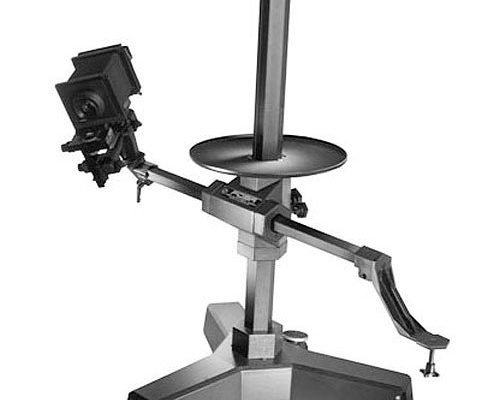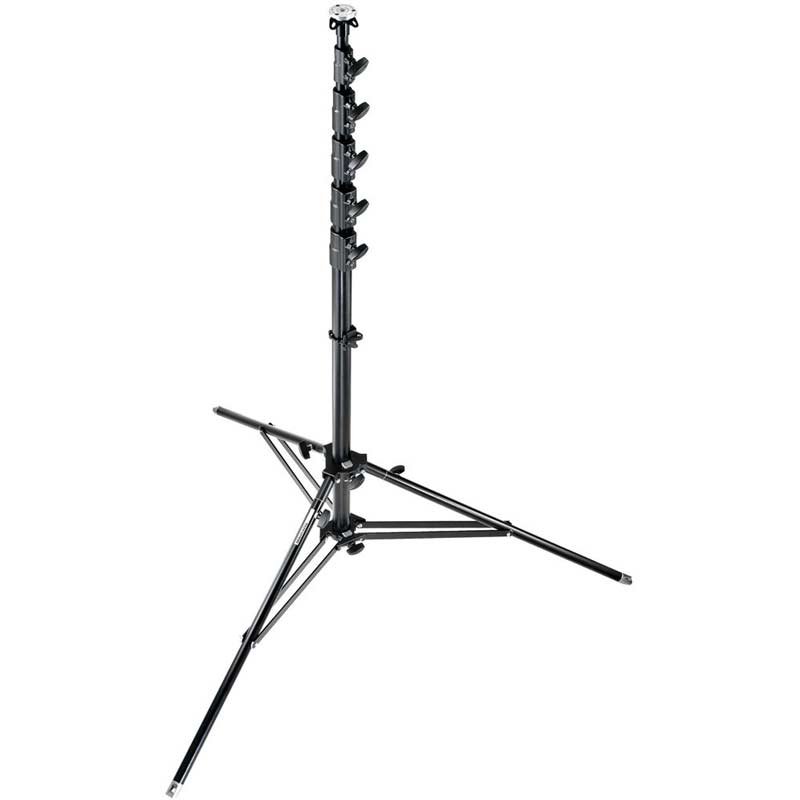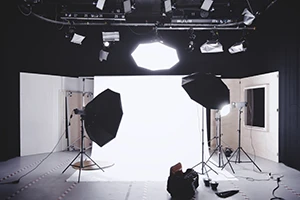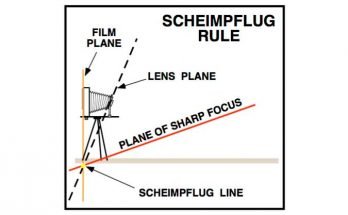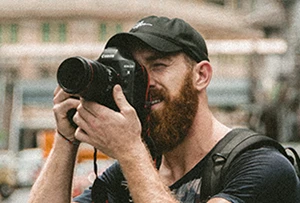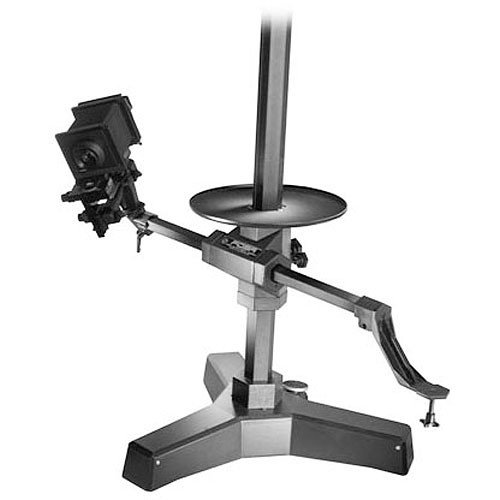
What is a camera stand?
A camera stand is a device used to support a camera while shooting. Sometimes called column stands or studio camera stands, these devices are almost exclusively found within a professional studio environment. They usually comprise of a heavy castor base from which a single column rises vertically. On the column rides a crossarm upon which a tripod head or platform is attached for the camera. Depending on the model, the crossarm can support a variety of adjustments.
In use, the camera stand is positioned in the desired location by rolling on the castors and is then locked in position, using a pedal or a castor brake. The crossarm is rised or lowered in position with a geared movement or an electric motor. It can also usually be extended out further from the column, for example to position a camera over a table.
The camera can be affixed directly to the crossarm, or onto a head attached to the crossarm platform. Most studio stand crossarms can support two cameras. Some can also swing around the column to allow for quick changes between the cameras. Studio stands are built to support heavy camera rigs, and are popular with large format camera users. Many models have built-in counterweights to enable effortless height adjustments.
In modern studio environment, a studio stand is often used while shooting tethered digital cameras. Most studio stand manufacturers today offer laptop support accessories for the crossarm to fascilitate this.
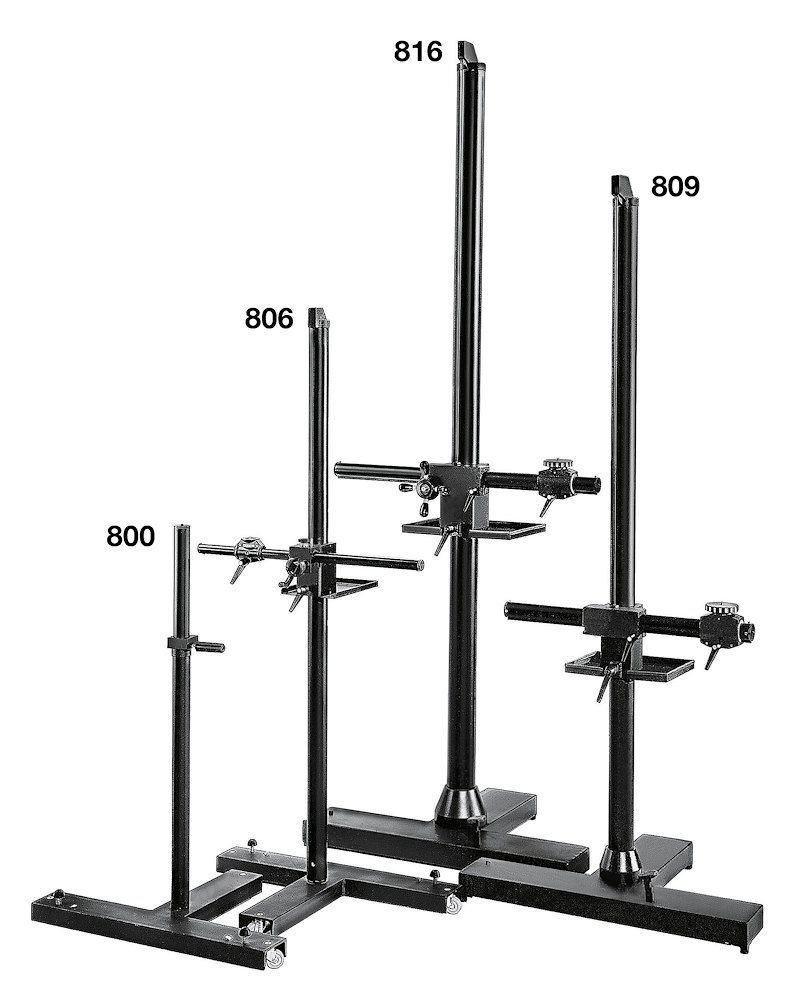
Camera stand vs tripod
You can sometimes hear tripods being improperly referred to as camera stands. However, the two devices are very different both in construction and use. Camera stands have more in common with broadcast camera pedestals than tripods. As opposed to a tripod, a camera stand is generally not easily transportable. They are built for stability and ease of use, but this does not come light. The Foba ASABA pictured above weighs in at 300 pounds (136.4 kg) and that’s before you add a head or a camera.
Even if you manage to transport your camera stand to a location, the castors on it are made for the smooth level floor of a studio. A camera stand usually has very minimal leveling capabilities, if any. Therefore, a tripod is almost always a better choice for on-location work. In addition, higher end camera stands can run north of $10 000, so unless one is really needed you’d be hard pressed to justify the expense.
Where camera stands excel is, unsurprisingly, the studio. Properly set up, they allow for fast, secure and effortless position adjustments. On a stand, you can go from ground level to 9 feet high with one hand. Try that with a tripod. In a fast paced portrait shoot or a high turnaround product campaign, the added convenience and speed make them indispensable.
Both tripods and studio stands offer the same 3/8″ threads for head attachment, so you can use the same heads and accessories.
High viewpoint camera stands
There is a variety of a camera stand that is actually a modified lightstand. A hybrid between a tripod and a camera stand, these stands allow you to get aerial point of view without getting airbourne. The Manfrotto Super High Camera Stand pictured above extends to a whopping 24 feet or 7.3 meters. Much safer and easier to operate than a drone, it can enable you to get some unique shots. In addition, no license or permit is needed for a stand as compared to a drone.
At a minimum, you will need remote shutter release to trigger your camera. If you are shooting digital, an even better option would be a wirelessly controlled camera that will allow you to preview the image. Taking it a step further, you can get a motorized pan-tilt head that will eliminate the guesswork out of framing the image.

